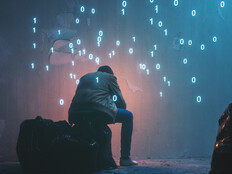For example, psychology students learning about stress might gain a deeper understanding of its impact on the body by performing a simple experiment in which a participant is stressed and his or her heart rate, skin conductance and breathing frequency is observed, gathered and analyzed. Biomedical engineering students might develop a brain-computer interface that gathers brainwave data to generate movements in a prosthetic arm that reacts to certain patterns.
From a research perspective, face recognition software could be used in the classroom to identify the cognitive-affective states of students and analyze whether they are optimal for learning. And student-athletes can measure their biometric data to help reach peak performance.
Biometric Data Must Be Handled with Care
Cheating detection is another popular use of biometrics, but such software also collects and analyzes intimate types of student biodata, including retinal activity, facial expressions, keystroke patterns, sweat gland activity, eye movement and neuroelectric patterns. Cheating-detection data is often collected by third parties or “outsourcers.” So, the handling of that data might be out of the immediate control of the higher ed institutions involved, which means that contracts with outsourcers should be very specific about show this data is handled.
“The data collected here needs to be treated with care, so that the schools involved are legally compliant with state and federal laws, as well as ethically proper,” Oravec says.
Medina adds that “data anonymization processes and proper data storage become must-haves. In most cases, if there is adequate data anonymization, regular informed consent methods can be implemented to harness and analyze data.”
LEARN MORE: AI has arrived in higher education. Now what?
The Use of Biometric Data Raises Privacy and Ethics Concerns
Because many commonly available biometric devices are not yet controlled by the Food and Drug Administration or other medical regulators, “the field still has a dangerous, Wild West quality,” Oravec says. It is therefore critical that when there is a decision to invest in biometrics devices, faculty members are given proper instruction and guidance on data management and safe databases.
Medina says that teachers and students working with biometrics should use the technology only “for learning purposes in a proper way, with a clear academic objective regarding use. Researchers that aim to run experiments and publish their results in academic literature must obtain clearance from the ethics committee within their institution.”
The world is watching as those in in higher ed settings apply biometric technologies.
“What happens in higher education is very important,” Oravec says. “Universities and colleges help establish the social standards for the future as they provide examples to students of ethical functioning. If students feel helpless as their intimate biometrics are being captured by systems they do not understand, dystopian scenarios emerge that are closer to the nightmares of science fiction than to a properly functioning and humane institution.”











